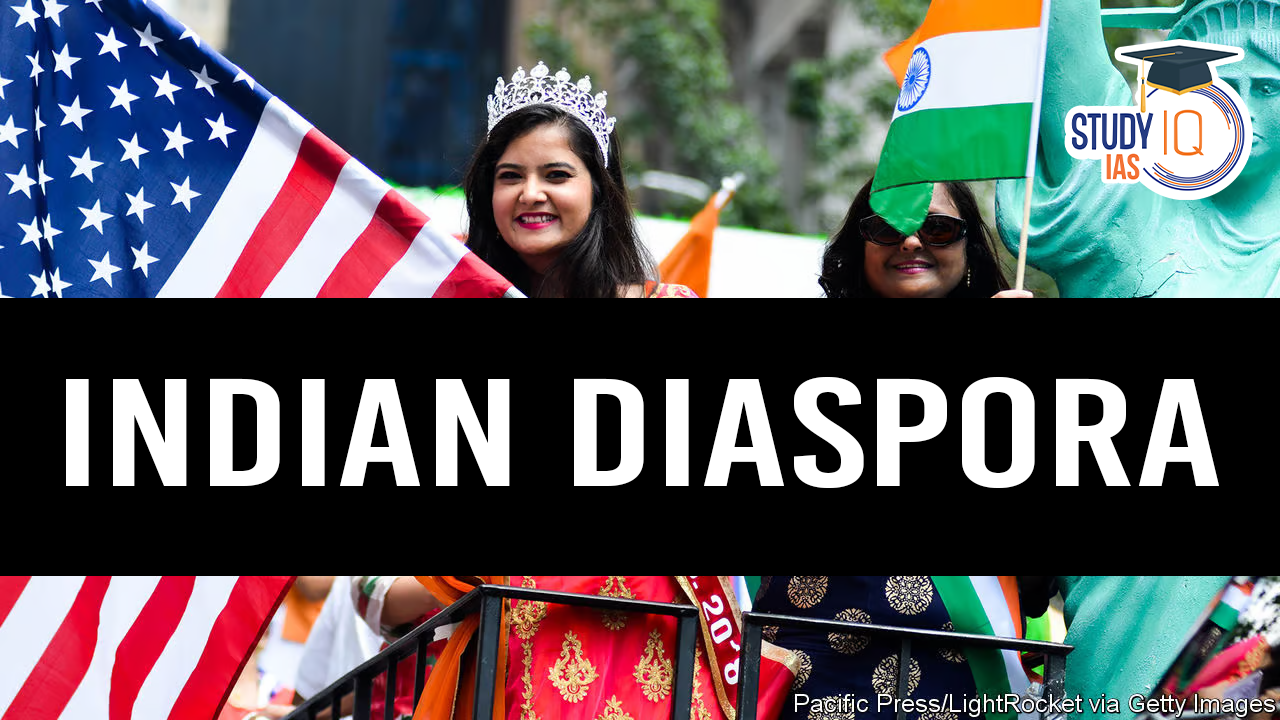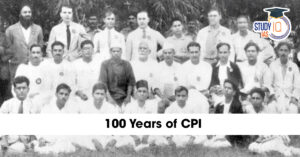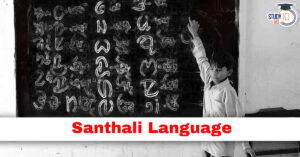Table of Contents
Context: During the inauguration of the 18th Pravasi Bharatiya Divas (PBD), Prime Minister Narendra Modi referred to the Indian diaspora as “India’s ambassadors to the world.”
Indian Diaspora
The Indian diaspora has been significantly shaped by the story of the Girmitiyas, a group of indentured laborers who were transported to various parts of the world during the British colonial era. Prime Minister Narendra Modi, while addressing the Pravasi Bharatiya Divas in Bhubaneswar, underscored the importance of studying and researching the history of Girmitiyas, acknowledging their pivotal role in shaping the global Indian community. The Girmitiyas’ story is an essential chapter in understanding the global spread of Indian culture, labor migration, and the long-lasting impact of colonialism on millions of lives.
Significance of Indian Diaspora
- Economic Contributions: Remittances from the Indian diaspora significantly bolster India’s economy.
- Eg., India maintained its position as the world’s top recipient of remittances in 2024, with inflows reaching a record $129 billion.
- Soft Power Projection: The diaspora serves as India’s cultural ambassadors, promoting Indian traditions, cuisine, and values globally.
- Political Influence: Indian-origin leaders and lawmakers in more than 30 countries strengthen India’s diplomatic and strategic ties.
- Eg., In the United States, Vice President Kamala Harris, is of Indian descent. Additionally, the 2024 U.S. presidential race featured Indian-American candidates such as Nikki Haley and Vivek Ramaswamy.
- Knowledge Transfer: The diaspora plays a vital role in advancing technology, research, and innovation through their expertise in global industries.
- Eg., Initiatives like the integration of the Unified Payments Interface (UPI) with international payment systems have been facilitated by collaborations with Indian-origin professionals abroad, enhancing India’s digital payment infrastructure
- Philanthropic Contributions: They support social and developmental projects in India through charity and funding for educational, health, and infrastructure initiatives.
- Global Advocacy: Indian-origin communities act as advocates for India’s interests in global forums, influencing public opinion and policies.
| Facts |
| The strength of the India-origin community worldwide is over 35 million — about 15.85 million NRIs and 19.57 million PIOs. |
What Were Girmitiyas?
The term “Girmitiya” refers to the Indian laborers who were part of the indenture system in the 19th and early 20th centuries. The indenture system was introduced by the British Empire to replace the labor force that had been lost due to the abolition of slavery in 1833. Under this system, millions of Indians, mostly from regions like Bihar, Uttar Pradesh, Odisha, and Tamil Nadu, were transported to distant lands, particularly British colonies, to work on plantations, mostly in sugar, coffee, and tea production.
These indentured laborers were promised a better future and were often told that they would be working for a fixed period (usually five years) under agreed terms. However, many were subjected to extreme exploitation, deception, and hardship once they reached their destinations, leading to a long-lasting legacy of resilience, cultural exchange, and hardship.
Where Were the Girmitiyas Sent?
The majority of the Girmitiyas were sent to British colonies where they worked under brutal conditions. Some of the major destinations included:
- Mauritius: One of the most significant destinations for Girmitiyas, where they were involved in sugarcane cultivation.
- Fiji: Another prominent location, where large numbers of indentured labourers were brought to work on sugar plantations.
- South Africa: Girmitiyas were transported to work in the sugar and railway industries, making a considerable impact on South Africa’s Indian community.
- Caribbean Islands (Trinidad, Guyana, Suriname): Girmitiyas were instrumental in building the sugar industry here.
- Other countries: Smaller numbers were also sent to regions like Fiji, the Seychelles, and other parts of the British Empire.
Why Did Girmitiyas Leave India?
The reasons for the migration of Girmitiyas were multifaceted, stemming from both socio-economic conditions in India and the British Empire’s strategic interests in the colonies. The primary reasons included:
Economic Hardships in India
- Famine and Poverty: In the 19th century, large parts of India were affected by famine, poverty, and agrarian distress. The devastation caused by several famines, particularly the Great Famine of 1876-78, made it difficult for many Indians to survive. This widespread deprivation prompted many to seek opportunities abroad.
- Landlessness: In many regions, peasants were becoming landless due to the introduction of land revenue systems under British colonial rule, which aggravated their economic conditions.
Labor Shortage After the Abolition of Slavery
- End of Slavery in 1833: The British Empire abolished slavery in its colonies in 1833. This created a significant shortage of labor on plantations, especially in sugarcane, tea, and other agricultural sectors in British colonies. The Girmitiya system was introduced as a way to fill this gap.
- Indenture System: Under this system, the British needed workers to replace enslaved Africans and started transporting indentured laborers from India. The system was portrayed as a way for impoverished Indians to improve their economic situation by working abroad.
Deceptive Promises
The Girmitiyas were promised a better life with fixed terms of labor, often for five years. They were also promised land, better wages, and freedom after the completion of their contracts. However, upon reaching their destinations, they found that these promises were largely false. The realities of indenture were harsh:
- Exploitation and Abuse: The workers were often treated poorly and forced to work long hours under grueling conditions. Many faced physical abuse, poor living conditions, and severe restrictions on their movements and rights.
- Deception about Terms: The laborers were deceived regarding their contracts. Often, they were made to work much longer than the promised five years, sometimes under different terms, and with little hope of ever returning home.
- Debt and Bondage: The system often led to a cycle of debt, where the workers were forced to buy goods from their employers at exorbitant prices, leaving them in perpetual bondage. In many cases, even after their indenture ended, Girmitiyas were unable to return to India due to financial constraints.
Cultural Impact and Legacy
Despite the hardships they faced, the Girmitiyas played a crucial role in shaping the culture and society of the countries they were sent to. Over time, many of them and their descendants became integral parts of the societies they lived in, contributing to the cultural, social, and economic landscapes of places like Mauritius, Fiji, South Africa, and the Caribbean. Some notable legacies of Girmitiyas include:
- Cultural Integration: The Girmitiyas brought with them Indian languages, food, festivals, and customs, which continue to influence the diaspora communities today. For instance, in Mauritius, the Indo-Mauritian culture is a blend of Indian traditions and the local culture.
- Political Activism: Many Girmitiyas and their descendants became politically active in their new countries, fighting for civil rights and contributing to the independence movements of their adopted nations.
- Economic Contribution: The Girmitiyas helped build the economies of many colonies through their labor on plantations, railways, and infrastructure projects.
Concerns Regarding Indian Diaspora
- Discrimination and Racism: The rise in far-right populism has led to visa restrictions, xenophobia, and challenges in foreign nations.
- Conflict Zones: Many Indians in regions like West Asia face risks due to political instability and wars.
- OCI Revocations: Arbitrary actions such as denying or revoking Overseas Citizenship of India (OCI) cards can alienate the diaspora.
- Economic Migration: The “brain drain” from India reflects the lack of adequate domestic economic opportunities.
- Exclusionary Policies: There is a need to make diaspora engagement inclusive and non-partisan, avoiding political favoritism.
- Cultural Assimilation vs. Identity: Balancing assimilation in host countries with the preservation of Indian cultural identity remains a challenge.
How the Indian Diaspora Can Help Achieve the Vision of Viksit Bharat
- Investments in Infrastructure: Channeling diaspora investments towards India’s infrastructure and development projects.
- Knowledge Partnerships: Engaging Indian-origin experts in science, technology, and education for skill development in India.
- Global Market Access: Facilitating market penetration for Indian goods and services using their influence in global trade.
- Innovation & Entrepreneurship: Promoting start-ups and fostering entrepreneurial ecosystems in India through mentorship and funding.
- Philanthropy for Social Development: Supporting grassroots projects in health, education, and rural development.
- Policy Advocacy: Acting as intermediaries to shape favourable global policies for India in trade, environment, and security.
Conclusion
The history of the Girmitiyas is a testament to the resilience of Indian laborers who endured immense hardships in search of a better life. Their contributions have significantly shaped the societies in which they lived, and their stories are an important part of the broader history of the Indian diaspora. As Prime Minister Narendra Modi suggested, it is crucial to continue studying and preserving the history of the Girmitiyas to honor their legacy and recognize their enduring influence on the world. Through research and documentation, we can better understand the challenges they faced and the cultural bridges they built, paving the way for future generations to remember their struggle and triumph.


 100 Years of CPI: Origins, Ideology, Fre...
100 Years of CPI: Origins, Ideology, Fre...
 Santhali Language: History, Script, Cons...
Santhali Language: History, Script, Cons...
 Why India Needs Its Own Economic Model?
Why India Needs Its Own Economic Model?

























